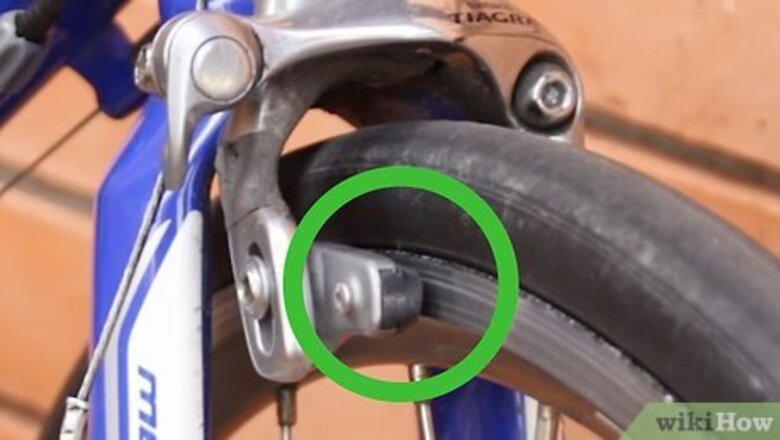
views
X
Research source
Trying Basic Fixes

Make sure that the brake pads aren't worn down. Pads that are worn down significantly will stick no matter how much you adjust them. If your brake pads are less than ⁄4 in (0.64 cm) thick, then you need to replace them. They should be "toed-in," meaning that front edge of the pads should touch the wheel rim first when you press the brake lightly.
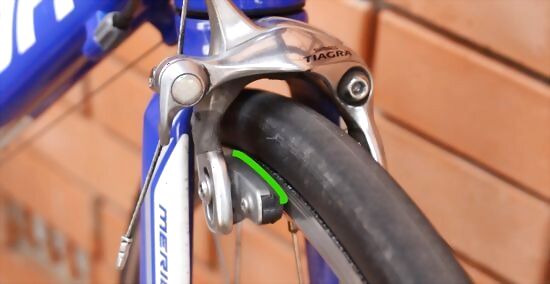
Check for a lip on the brake pad. Some brake pads have a "lip" that sticks out on the side closest to the hub. This is caused by uneven wear and you will need to file or sand it down if there is a lip. If you've worn your pads down around the lip, then they might get stuck in the rim. Sand or file down the lip. If you do find that the lip is sticking out too far, file or sand it down with sandpaper so that the wheel can spin smoothly. Be very careful not to sand off so much that the brake pads won't work! You may need to remove the wheel to do this.
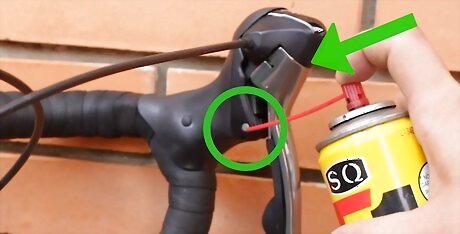
Lubricate the lever pivots. These are the points upon which the individual parts of your breaks pivot. If your levers feel rigid, try oiling the "pivot" pins on the lever handle. Place a dab of oil on each pivot point. Use a light machine oil or a special bicycle lubricant for best results. After you oil the lever pivots, they should feel snappy and quick when you pull them. Do not use lubricant on brake pads, rotors, or rims. This might ruin the pads and make it hard for you to stop your bike!
Adjusting the Cables

Check the cables and replace them if needed. Look for split housing and corroded cables, and replace the housing and cables if needed. If your levers are fine and the pad isn't stuck to the wheel somehow, then your cables form the next likely problem area. You should be able to fix your cables by hand without consulting a mechanic. If you do have trouble, however, don't hesitate to take your bicycle in to a shop. Split housing and corroded cables are common when you have stuck brakes.
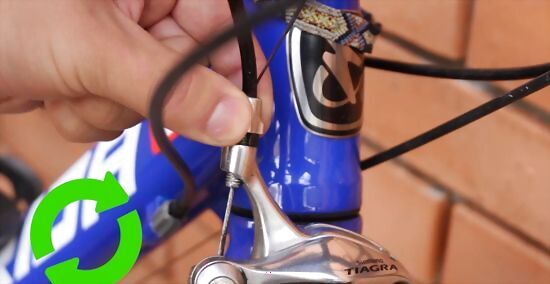
Adjust the cable lengths to increase tension. The cable length adjustment is perhaps the most basic brake repair task that you'll encounter. On a typical safety bike, you can make fine adjustments without any specialized tools. Simply turn a barrel adjuster to make the best fit at the end of a length of cable housing. The barrel adjuster for a V brake is normally located on the hand-lever, where the housing exits.
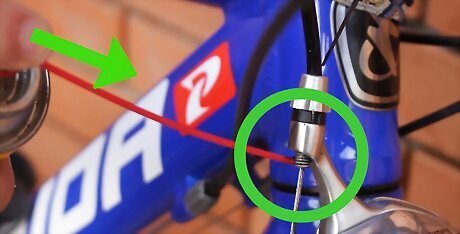
Lubricate the cables. Get lubricant in an aerosol can with a tube. Then, spray oil into the cable housing at the ferrule: the cap where the cable enters the housing underneath the brake levers. Use a light machine oil with a small nozzle similar to "3 in 1" Oil, or purchase a special brake cable oil at a bike shop. Spray gently, and don't over-saturate the cables. WD-40 and other industrial-grade degreasing products may "wash" the factory lubricant off the cable. When the WD-40 evaporates, there will be very little lubricant residue on the cable.
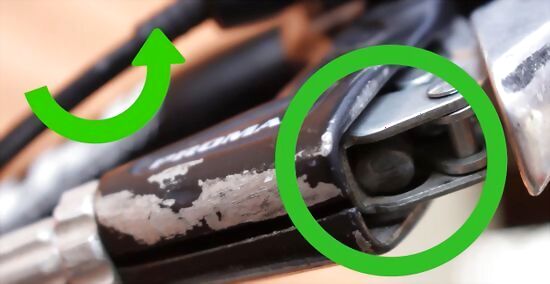
Remove the tubing. If the cable is still stiff, try taking it out of its plastic tubing. First, remove the clamp at either the caliper or brake lever. Then, pull the cable out the opposite end. If you remove the cable, use an aerosol solvent (or even WD-40) to flush any dirt or debris from the cable tube while the cable is out. Apply a light coat of lithium grease or machine oil to the cable. Finally, reinstall the cable if it is not damaged. Put the cables back into the casing. Thread the loose end of the cable through the clamp at the end where you removed it. Then, check the "free travel": the distance the brake lever can be squeezed before the brake contacts the wheel. Tighten the clamp when the brake pads are about ⁄4 inch (0.6 cm) from the wheel with the lever released.
Using Advanced Fixes
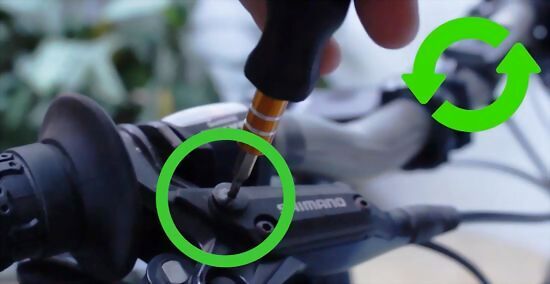
Bleed and replace the brake fluid. If possible, consult the manufacturer’s instructions and any video tutorials you can find to ensure that you get the correct type of bleed kit for your bike. This only applies to hydraulic brake systems. If you have hydraulic brakes, then the fluid will occasionally need to be bled and replaced. Make sure you don't get a lot of air bubbles in your replacement fluid. This can lead to the brakes feeling soft. Never use mineral oil as brake fluid if your user's manual specifies DOT (Department of Transportation-approved brake fluid).Likewise, never use DOT if your manual tells you to use mineral oil.' If you mixed up your fluids last time you bled the system, then that might be your problem. Avoid getting any oil or dot fluid on the brake pads because this will ruin them.
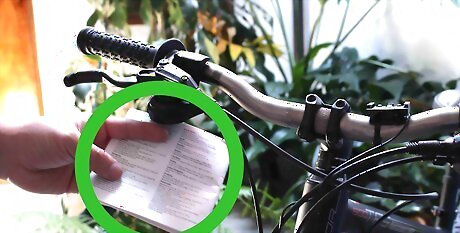
Consult your user's manual for more specific instructions. There are several kinds of hydraulic systems, and each is a little bit different. Look to your manual for step-by-step instructions. If you can't access your manual, try to figure out exactly what type of hydraulic system you have, and then find online instructions for that specific system. If you're still having trouble, then consider visiting a bike shop.
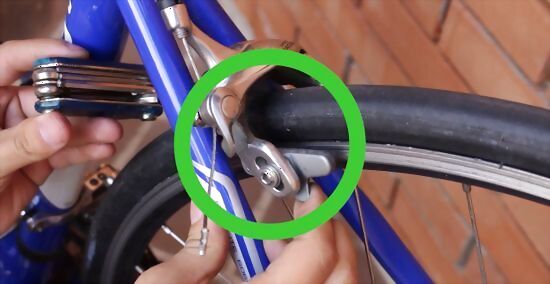
Adjust the calipers for rim brakes. The calipers are the part of the bike that actually squeeze the brake pads to the tire on rim brakes. Here's how to adjust them: Unscrew the brake pads, located on the inside of the brake calipers above your tires. The brake pad is the small piece of rubber on the lower inside of the caliper that actually comes into contact with the wheel. Adjust the brake so that it is 3 - 5 mm from the rim. Tighten the brake pad. Spin the wheel in the air and test the brakes. Adjust further as needed.
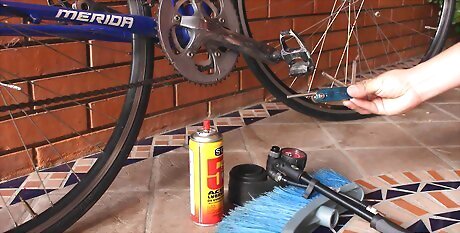
Take your bike to a mechanic. If all else fails, then it may be most efficient to ask a professional to fix your brakes. Look for a reputable bike shop or mechanic in your area. Read bicycle shop reviews online before you visit. You should be able to get a good sense for whether the mechanics there are helpful.


















Comments
0 comment